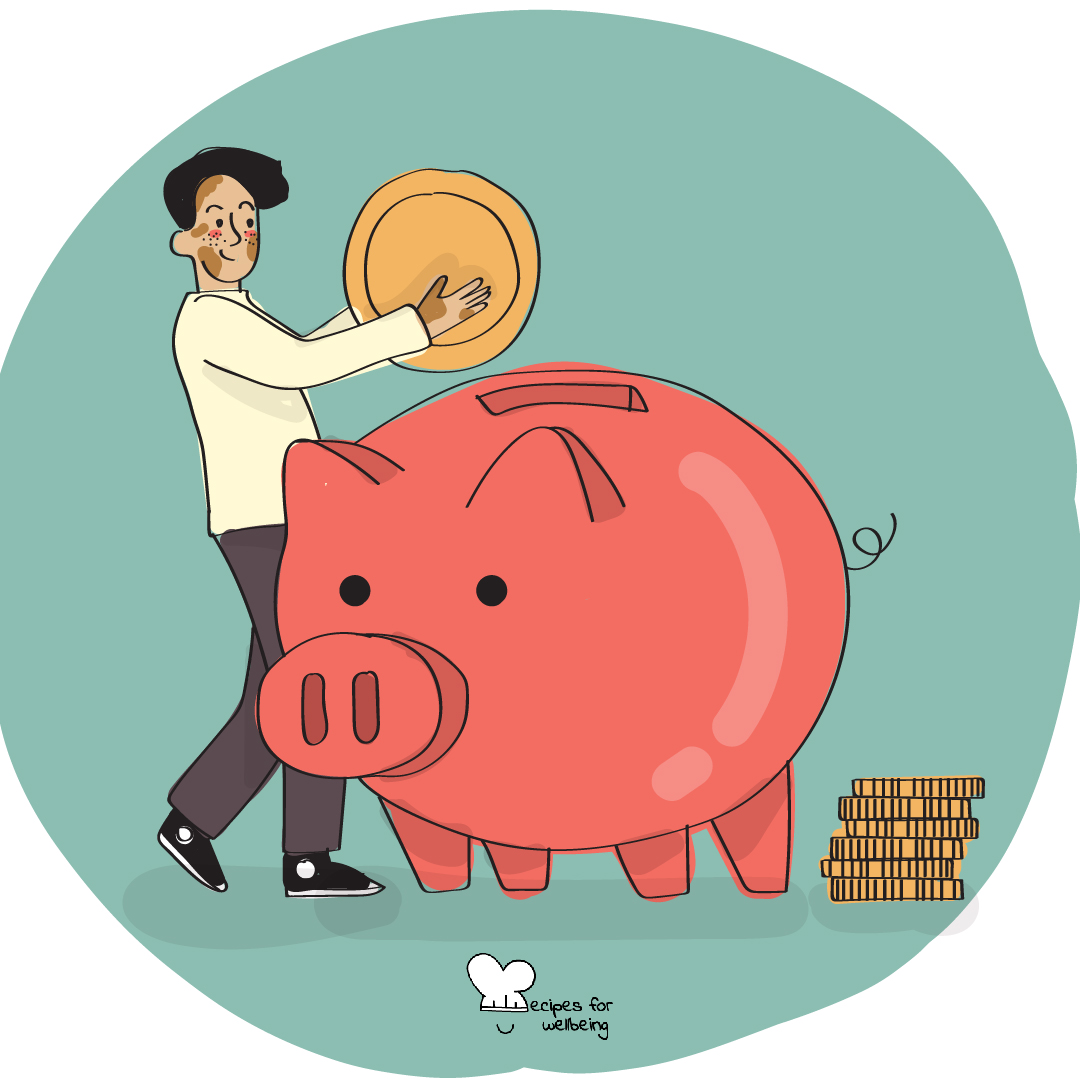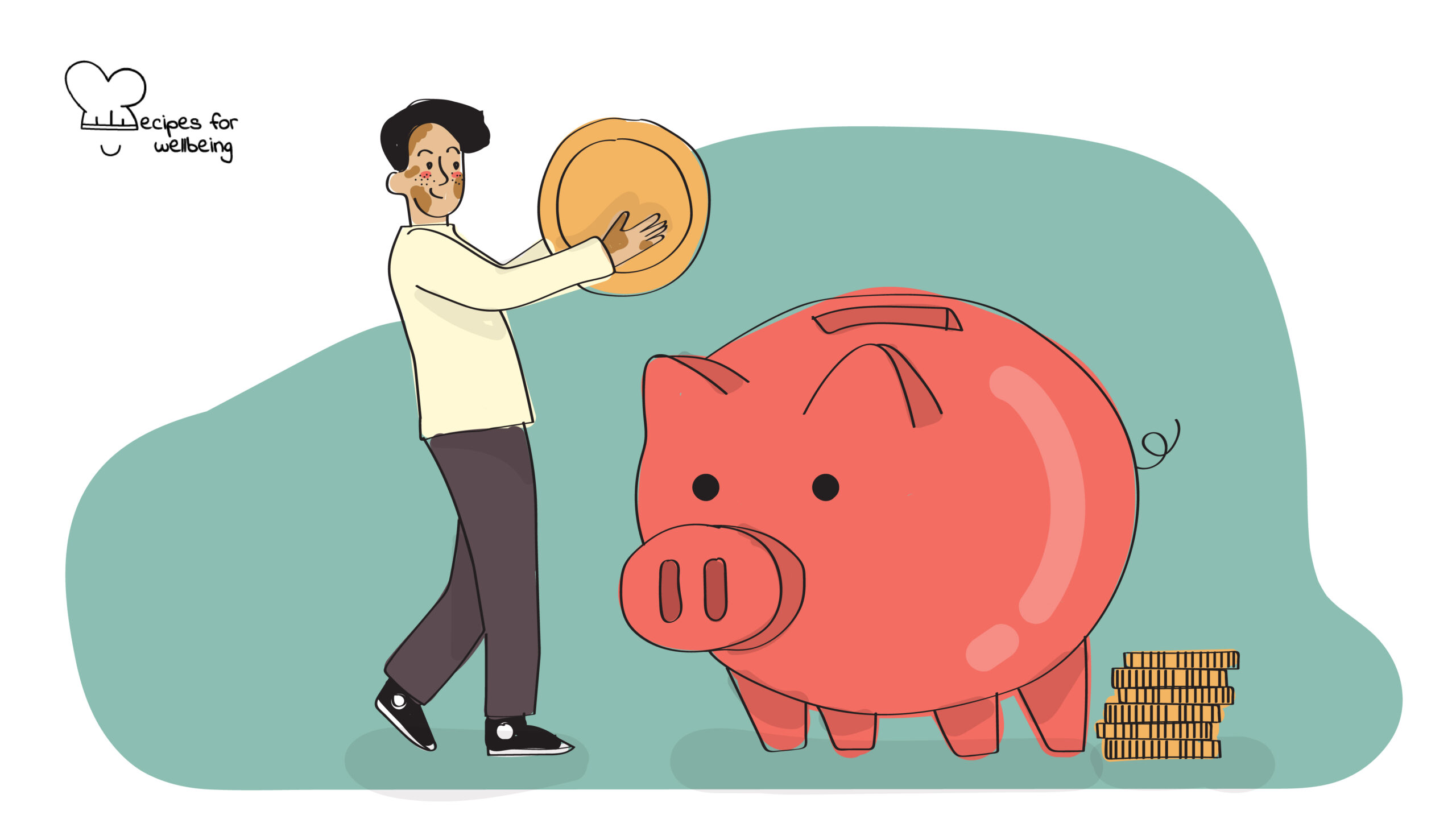
The no-spend challenge
The best things in life aren’t things. ―Art Buchwald
 Serves: 1 person
Serves: 1 person
 Difficulty: Medium
Difficulty: Medium
 Total time: 1 week
Total time: 1 week
 Ingredients: Open-mindedness
Ingredients: Open-mindedness
 Wholebeing Domains: Accomplishments, Liberatory Learning
Wholebeing Domains: Accomplishments, Liberatory Learning
 Wholebeing Skills: Ambition, Autonomy, Creativity, Goal-setting, Intentionality, Liberation, Planning
Wholebeing Skills: Ambition, Autonomy, Creativity, Goal-setting, Intentionality, Liberation, Planning

The no-spend challenge
 Description
Description
An exercise to challenge your spending habits.
Minimalism is a popular way of living that focuses on intentionality and on living with just the things that you need to support yourself. It’s a sustainable way of living that draws people in for the sense of peace it offers. Minimalism isn’t just about saying “no” to things, but rather about opening up space in your life to say “yes” to things that are important to you.
Have you considered extending the principles of minimalism to your finances? Try a “no-spend” challenge for one week! The idea with a no-spend week is that you do not spend any money for an entire week. It’s a great challenge that helps you learn about your financial habits.
This recipe has been created by our wellbeing content writer collaborator Marissa Del Mistro.
 Steps
Steps
Step 1 – Determine what you can/can’t spend money on (30’)
Start by reviewing your finances, budget, and spending habits. If you are yet to find a budget that works for you, have a look at our recipe: “Tips for financial budgeting”.
Depending on your specific financial situation, determine what is okay to spend money on during the no-spend week and what is off bounds! For example, if you can, plan to do the no-spend week on a week where you do not have bills and/or rent(s) due, or pay them in advance, to enhance the experience. But of course, if that’s not possible, you must pay your bills!
Items such as groceries, gas/transportation costs will likely fall on the “can spend” list. However, hold yourself accountable and avoid buying excess groceries or doing extra trips, so that the money spent is really for needs as opposed to wants!
Step 2 – Check your calendar (5’)
To avoid undue stress, try to pick a week that makes sense in line with your responsibilities and/or social commitments.
Step 3 – Find your motivation (5’)
Determine what the money you will be saving this week will go towards. Will it go towards a well-deserved vacation? Maybe towards some new sports gear? It could also go towards things like paying off student debt, or towards your emergency fund.
Step 4 – Get creative (10’)
Check out your local area’s “what’s on” guides to find activities like free concerts, free galleries, and other events. There is plenty to do from walks, cooking, board games, swimming, movies, making art and so much more during your no-spend week.
Step 5 – Track and re-evaluate (1 week)
During the week, it is a good idea to track how the no-spend situation is going for you and how it makes you feel. Have you learnt anything new or surprising about your spending habits?
Once the spending freeze is complete, you can then re-evaluate your normal, monthly budget. You may have realised that you are spending more on “wants” throughout the week (for example on your morning coffee!) than you need to be spending.
Of course, you should indulge every so often – the point is not to never enjoy yourself – but to do it with a bit more responsibility and consciousness! The no-spend week helps you realise the potential for extra savings without too much difficulty.
If you enjoyed the no-spend challenge for a week, you could go the extra step and try it for longer periods or once a month for an added challenge!


 Arabic
Arabic Chinese (Simplified)
Chinese (Simplified) Dutch
Dutch English
English French
French German
German Italian
Italian Portuguese
Portuguese Russian
Russian Spanish
Spanish